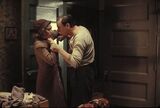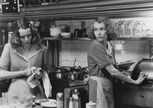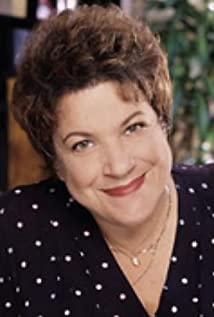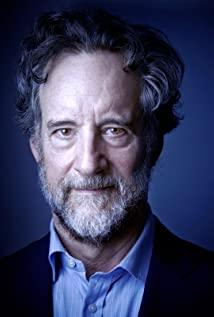As a director who has been writing and directing at the rate of one film a year and insisting on filming for half a century, Woody Allen's spiritual world seems to have been turned into countless fragments scattered in different works. He takes the trouble to express them repeatedly, and we are always looking for the connection between different works with gusto. So in a nutshell, trying to interpret WA's films always involves intertextuality.
The setting of The Purple Rose of Cairo is the Great Depression of the 1930s. In terms of nostalgia, it should be in the same category as "Coffee Commune" and "Midnight in Paris". At that time, real life was full of misery of unemployment. Only in the movie, the romance continued to sing and dance. Indulging in the fictional world created by the entertainment industry has always been an important means for the public to stay away from pain under the economic crisis. Wheels are very similar.
Mia Farrow's heroine is in an unhappy marriage. After her husband lost his job due to the Great Depression, he has never recovered, and he has become a large household garbage who idles around during the day and drinks and beats his wife at night. The standard configuration of poor and lowly married couples, financial constraints and a husband who is drunk all day after being knocked down by reality is almost exactly the same as Kate Winslet in "Ferris Wheel". But Mia Farrow's character is less neurotic, and the actor isn't as full of lust and sensuality as Winslet. Especially Mia Farrow's voice no matter what he plays, it reminds people of the big-chested and brainless stupid Bai Tian in "Radio Age", who was cheated by countless unreliable men on the way to Hollywood daydreams. Deception is her most likely destination. And when Mia Farrow used her voice to play a married conservative woman in old fashion in the 1930s, it sounded full of inconsistencies. It's hard to imagine that such a person's attitude towards marriage is actually inclined to rely on inertia. But in the film, she tries to run away from home after arguing with her husband, but soon succumbs to reality (after seeing a group of prostitutes on the road, she understands that she can't live better than them by her own ability. Divorce during the Great Depression was not affordable. cost) The bridge section that was packaged and returned to the house did indeed make a footnote for this. So you can only accept the heroine played by Mia Farrow, watching her rely on her courage to live on being able to go to the theater to watch a movie every day after get off work, and involuntarily feel pity for her (for "Ferris Wheel" Winslet is a different emotion altogether).
Next is Zhuang Zhou Mengdie. Since you can't make it through, let the mountain come over - Woody Allen's play-in-play and other postmodern tactics in this film are reminiscent of works like "Annie Hall", "Deconstruction Lover" and more . The fictional character in the longing actually walked out of the screen and dragged himself to run away; other characters in the film began to talk about this change; the actor directly scolded the audience across the screen to strengthen the alienation effect.
But the direction of the story is not "choose reality or ideal?" or "when you look at the moon, the moon is also looking at you" this kind of routine. Because when Woody Allen put Tom Buster and his real-life actor Jill together and let Mia Farrow make a choice, Mia Farrow's final choice was to stay in the real world, but let Mia Farrow choose. Jill takes her far away (Hollywood). It's a complete compromise. The heroine does not want to take too big steps to choose the romantic Tom in the fictional world, but also hopes that there will be a prince charming on the colorful clouds to take her away from the painful reality. When the two Prince Charming showed down in front of her and she discovered the possibility of the best of both worlds, everything that followed became logical. And Winslet in "Ferris Wheel" didn't have this kind of treatment. In order to leave the vulgar reality, she acted even more desperate, just like the heroine in Maupassant's "The Necklace". Tragedy always happens when there is only one prince in the hands of a woman, but the prince holds two princesses in his arms.
As similar films with similar structures, "Purple Rose of Cairo" and "Ferris Wheel" have their own advantages in character performance. "Ferris Wheel" shows the complexity of the characters better and more three-dimensional - Winslet does not deal with the kind of stepmother and daughter, but after all, she has a good heart and wants to call and inform, but then she thinks about her ex-husband again. The daughter is jealous when she takes away her little boyfriend, and she feels uneasy in conscience when she is alone after the incident, but when she is questioned face-to-face, she tries to defend herself out of her instinct for survival. And "Purple Rose of Cairo" provides different perspectives of men and women on both ends of the screen to show the real and the fake - if you look at it from Tom Buster's point of view, the story becomes that he wants to jump out of the same life and pursue The women on the other side of the screen (women also usually represent the prototype of all ideals, including life, the statue of Pygmalion in Greek mythology, Bernard Shaw's Eliza, Jin Yong's fairy sister, Woody Allen's own Anne Hall, etc. But in the end, the ideal woman rejected him, and he could only return to the familiar world to accept his failure. Mia Farrow's heroine isn't the only one to be pitied. Therefore, if Winslet in "Ferris Wheel" is showing the disillusionment of older women from dreaming to nightmare, then "Purple Rose of Cairo" is making fun of the disillusionment itself.
After all, there are so many romantic scenes in the love of men and women, which are essentially nothing more than a longing for another life. Two men and women who grew up in completely different environments regard this desire to "always want to live elsewhere" as the basis for loving each other out of mutual envy of each other's identities. But in fact, they neither understand the ambiguous distance (it is because of ambiguous that they look forward to it), nor do they understand the ambiguous each other. The end of the realistic point must be that the bamboo basket is empty, and after the big fuss, they still have to go back to their own homes and find their own mothers. The only Republican son of the Democratic family in "Everybody Says I Love You" was finally diagnosed with cerebral ischemia (typical Woody Allen humor), and when he was cured, he completely left the Republican party aside. . In the expression of romanticism, in addition to letting two people break through the obstacles of their respective classes and insist on falling in love, the more important point is to remember to let the picture come to an abrupt end at this time - and only in this way, can the fixed-frame love become a romantic negative. This is the case when Tom utters the phrase "there should be a fade out" when he kisses Mia Farrow in the film. Otherwise, no matter whether we end up going far away, on this side of the screen or there, when we settle down and start living, sooner or later, we will find that the beautiful appearance of champagne is actually full of ginger ale.
But what about this? Didn't Mia Farrow walk into the theater at the end of the movie for the next movie? Don't we still sit in front of the screen watching Woody Allen? Who can stop dreaming?
Before taking Mia Farrow into the movie world, Tom said that he was tired of discussing what is real and what is unreal, life is too short, don't spend time thinking about what life is and asking for trouble, just live it. From here, you can pick up another type of film represented by the old Woody's "Whatever works".
View more about The Purple Rose of Cairo reviews











